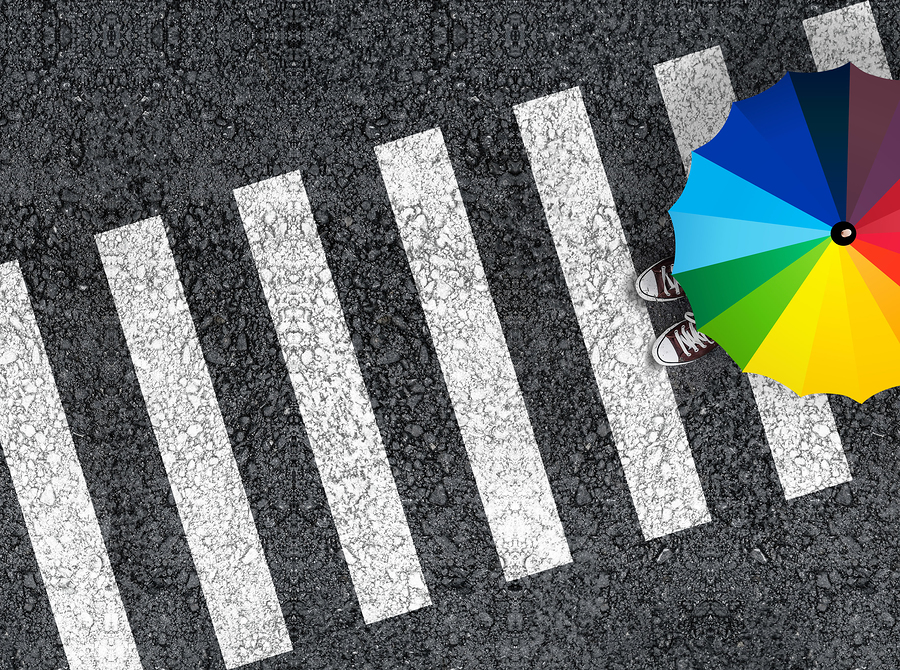
Pedestrian accidents can leave people with many questions.
While drivers should be aware that they’re sharing the road, that’s not always the case. They’re sometimes too fast or too distracted to look out for people traveling on foot. With the average car weighing over 4,000 pounds, pedestrians are up against way more than the typical accident victim.
Q: What should I do after I’m injured in a pedestrian accident?
A: If you’re physically able, move away from the road so you’re not at risk for another accident. Call 911. Your health and safety are the first priorities, and an operator will get an ambulance and police to your site.
Gather as much information as you can. A copy of the police report as well as photos of your injuries, the vehicle, and the surrounding area can serve as evidence in your favor. Gathering witness statements is also useful. If you’re seriously injured, these steps may not be immediately possible for you to do. See if a bystander can assist you.
Q: What if I’m partially at fault?
A: Because Florida has a comparative fault statute, more than one party can be considered liable for an accident. Say as a pedestrian, you were hit while crossing the street when the driver involved had the right-of-way and the driver was traveling above the speed limit. Both parties will likely share a percentage of fault.
Q: How long do I have to file a lawsuit after my accident?
A: In Florida, you generally have four years from the date of the accident to file a lawsuit. That applies to both bodily injury claims and property damage. In certain circumstances, that four year limit can be tolled which gives an accident victim more time.
Those who were minors when the accident took place have an additional three years. You can also be granted more time if the party you’re lodging the claim against can’t be located. Likewise, if your injury wasn’t discovered right away, you may also have a chance to pursue a lawsuit beyond the four year limit.
Q: What can I recover in damages from my accident?
A: Accidents are financially and emotionally draining. If you’ve been injured in a pedestrian accident, there’s a good chance you’ve had to seek some form of medical care. You may have even missed work, lost your job, or become disabled because of the crash.
Consequently, you can seek compensation for hospital bills, doctors’ appointments, therapy, and lost wages as well as for your pain and suffering. If you’ve had to pay for a service you’d otherwise do yourself, for instance, cooking and cleaning, you can pursue compensation for those expenses.
Coming into contact with a car as a pedestrian can also change your appearance forever. Since scars and other disfigurements can impact your self-esteem and quality of life for the worse, you can recover damages for those changes to your body.
Q: What information will I need to give my lawyer?
A: Share any accident-related documentation you have. The police report, witness statements, and photos from that day will give your lawyer a clearer picture of the accident. Additionally, your medical records are critical in showing the extent of the damage.
Q: What if I can’t afford to pay for a Lawyer?
A: Attorneys understand that for many people, finances are especially tight after an accident. Personal injury lawyers often work on contingency. In other words, you owe nothing unless they win your case. When hiring a lawyer, you will agree to pay a certain percentage of the potential compensation recovered.
Q: What if I don’t have health insurance?
A: Florida has a No-Fault Law that requires drivers to have a personal injury protection policy. If you don’t have health insurance as a pedestrian, the insurance covering the vehicle that hit you will be responsible for your care.
Q: Are drivers always at fault when hitting a pedestrian?
A: In most cases between pedestrians and drivers, at least some degree of fault–typically the bulk of it–is assigned to the driver. Generally, there are more traffic regulations for drivers than there are for pedestrians. For example, in the absence of traffic signals and signage, drivers are responsible for yielding to pedestrians who are in the process of crossing the street. Regardless of the factors, a driver that harms a pedestrian may be held liable for their actions.
Q: How long does the legal process take?
A: The length of the process varies depending on the case. It ranges from several months to several years. Recovery time is one factor. Once an accident victim reaches maximum medical improvement, the lawyer will send a demand letter about the extent of damages to the other party’s insurance company.
Negotiations between parties can last for months after the initial letter is received. While these negotiations usually end with an agreement, some personal injury cases do end up in lengthy trials.
Q: How do I choose a lawyer?
A: Since you’ll be communicating with your lawyer over the course of your case, it’s important to choose someone you feel comfortable with. At Eberst Law, we offer free consultations to earn your business and to help you decide if we are the right fit for you. We leave no options unexplored, and we’re confident in our ability to recover maximum compensation for you. Contact us online or call us at 772-225-4900.
